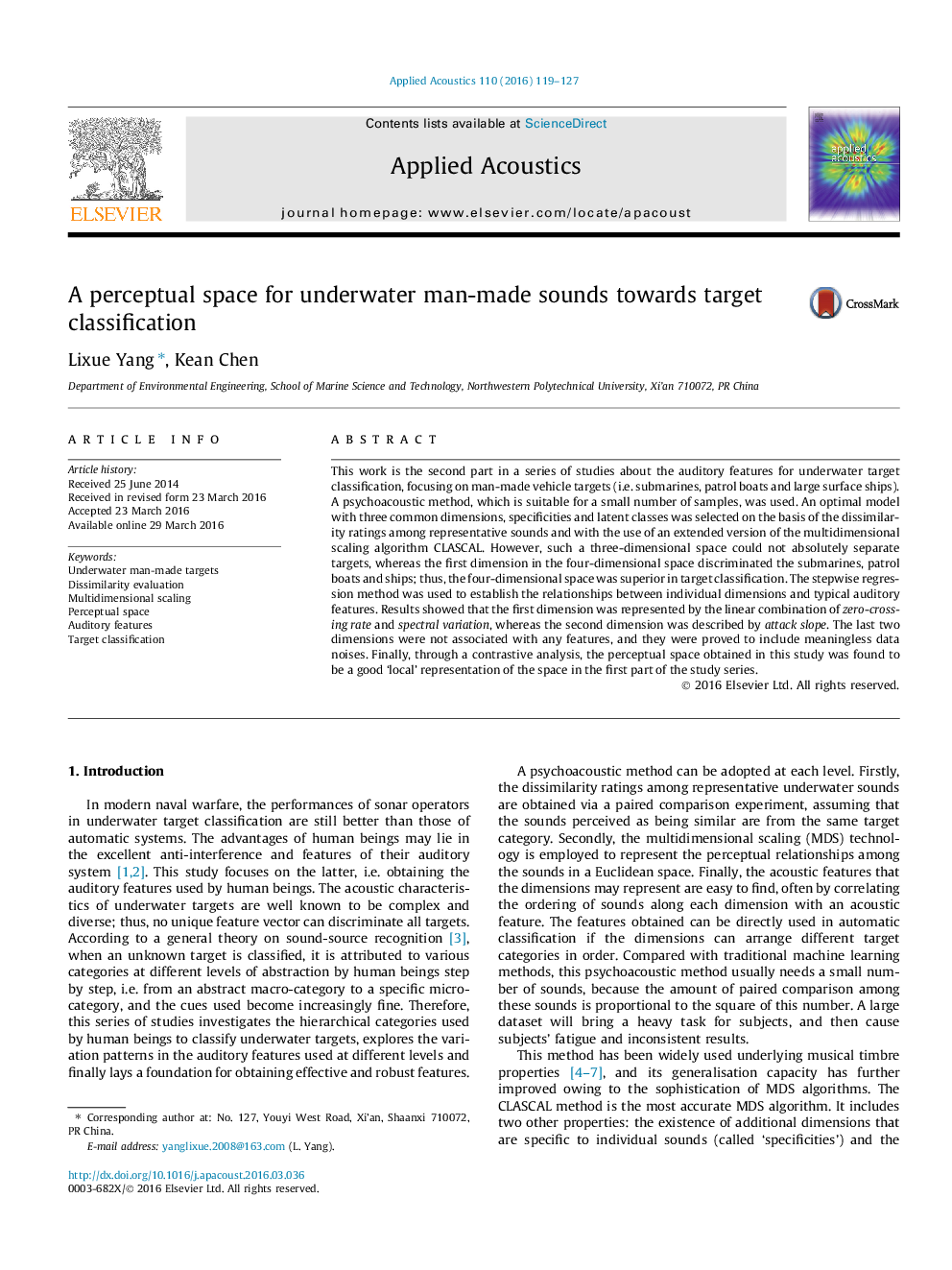| Article ID | Journal | Published Year | Pages | File Type |
|---|---|---|---|---|
| 7152493 | Applied Acoustics | 2016 | 9 Pages |
Abstract
This work is the second part in a series of studies about the auditory features for underwater target classification, focusing on man-made vehicle targets (i.e. submarines, patrol boats and large surface ships). A psychoacoustic method, which is suitable for a small number of samples, was used. An optimal model with three common dimensions, specificities and latent classes was selected on the basis of the dissimilarity ratings among representative sounds and with the use of an extended version of the multidimensional scaling algorithm CLASCAL. However, such a three-dimensional space could not absolutely separate targets, whereas the first dimension in the four-dimensional space discriminated the submarines, patrol boats and ships; thus, the four-dimensional space was superior in target classification. The stepwise regression method was used to establish the relationships between individual dimensions and typical auditory features. Results showed that the first dimension was represented by the linear combination of zero-crossing rate and spectral variation, whereas the second dimension was described by attack slope. The last two dimensions were not associated with any features, and they were proved to include meaningless data noises. Finally, through a contrastive analysis, the perceptual space obtained in this study was found to be a good 'local' representation of the space in the first part of the study series.
Related Topics
Physical Sciences and Engineering
Engineering
Mechanical Engineering
Authors
Lixue Yang, Kean Chen,
